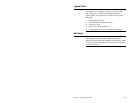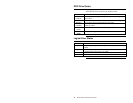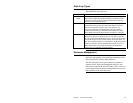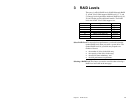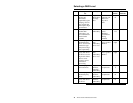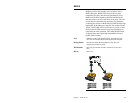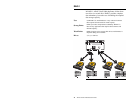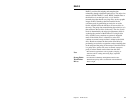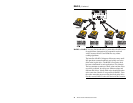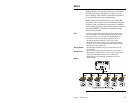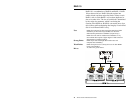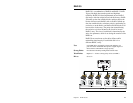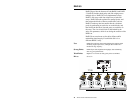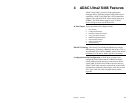
Chapter 3 RAID Levels
23
RAID 3
RAID 3 provides disk striping and complete data
redundancy though a dedicated parity drive. The stripe size
must be 64 KB if RAID 3 is used. RAID 3 handles data at
the block level, not the byte level, so it is ideal for
networks that often handle very large files, such as graphic
images. RAID 3 breaks up data into smaller blocks,
calculates parity by performing an exclusive-or on the
blocks, and then writes the blocks to all but one drive in
the array. The parity data created during the exclusive-or is
then written to the last drive in the array. The size of each
block is determined by the stripe size parameter, which is
set during the creation of the RAID set. If a single drive
fails, a RAID 3 array continues to operate in degraded
mode. If the failed drive is a data drive, writes will
continue as normal, except no data is written to the failed
drive. Reads reconstruct the data on the failed drive by
performing an exclusive-or operation on the remaining data
in the stripe and the parity for that stripe. If the failed drive
is a parity drive, writes will occur as normal, except no
parity is written. Reads retrieve data from the disks.
Uses
Best suited for applications such as graphics, imaging, or
video that call for reading and writing huge, sequential
blocks of data.
Strong Points
Provides data redundancy and high data transfer rates.
Weak Points
The dedicated parity disk is a bottleneck with random I/O.
Drives
Three to eight
Cont’d



